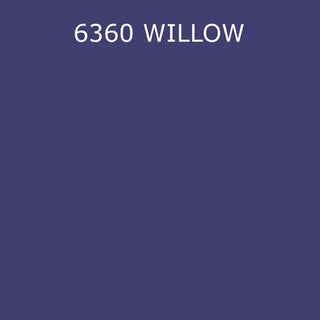Choose a sub category:
Mason Stains
What are Mason Stains?
Mason Stains are the best way to add color to your ceramics. They are used to color glazes, underglazes, slip, and clay.
Mason used to stock many more colors that were blends of the main base colors. Here at Sheffield, we still offer all of the hard-to-find discontinued colors!
These lead-free ceramic stains are fritted raw materials. Frit is essentially one or more colorants encased in glass then powdered. This makes the colorants such as oxides and carbonates insoluble to your body hence much safer to use. All Mason Stains are also lead-free.
Mason carefully formulates and tests their batches to ensure you get the same results time after time. Raw material colorants can vary greatly from bag to bag, but Mason Stains are trustworthy and consistent. Each Mason Stain is rated for low-fire, mid-fire and high-fire temperatures up to cone 10 except tin-antimony-lead yellows and pinks (Cone 02). You can expect full color from these ceramic stains when firing in oxidation over white and buff color clays. Results will appear different over darker clay bodies and in reduction atmospheres but they will still be beautiful and dependable!
You can colorize a base glaze that contains whiting but no zinc in the formula. The density of the color is controlled by the percentage of ceramic stain added. Stains added to glaze formulas at between 1 and 10% yield a wide variety excellent colors and tones.
You can use Mason Stains to tint clay bodies or clay slip. With these stains you can create your own unique underglaze colors and washes.
(see more tips on usage below)
Mason Stains are all Free Shipping from Sheffield Pottery. There are discounts at the 1 pound, 5 pound and 10 pound levels. Bulk pricing is available for those who use large quantities. Feel free to call for a quote for orders over 10 pounds.
How to Use Mason Stains
Mason Stains can be used to color glazes, slips, and clay bodies. These ceramic stains are fritted to insure color consistency from batch to batch. The fired color should be almost identical to the stain in its raw state. Mason stains can be used at all firing temperatures (except tin-antimony-lead yellows and pinks fire only to cone 02) but are formulated specifically for use in oxidizing atmospheres. Therefore, in oxidation firings to cone 10, the colors are reliable and consistent. Stains will vary in color, however, depending upon the medium into which they are mixed and the firing temperature.
Stains in Clays and Slips
Best results can be expected when lead-free ceramic stains are added to a white clay body or slip base. Fire to normal maturation temperature. Percentages of stain added to clay or slip should be determined by testing.
How Much Mason Stain Do I use in Glazes and Slip?
Stains can be used to color either transparent or opaque base glazes. Stains are generally added in amounts ranging from 1-10% of the glaze batch. The higher the percentage of stain, the deeper the fired color will be. The base glaze should contain a calcium carbonate content of 12-15% and have no zinc. Zinc can adversely affect colors, especially chrome-tin pinks, vanadium yellows, and cobalt blues. The percentage of stain plus opacifier should equal 15% of the total glaze batch.
Example 1
Base glaze 100%
Zircopax 10%
Stain 5%
Example 2
Base glaze 100%
Tin Oxide 7%
Stain 8%
Popular among ceramic artists and potters, Mason stains provide a broad spectrum of colors and are simple to work with. Furthermore quite cheap and free from costly glazing ingredients are they are. Mason stains also are acceptable to use in the ceramic workshop and non-toxic.
Though underglazes, slips, or overglazes can also be used to color ceramics and pottery, mason stains are among the most often used and flexible techniques.
Mason stains can be used to restore and match the color of current concrete surfaces or to provide color to fresh building projects. Applications including roads, patios, sidewalks, and building facades in architectural and ornamental concrete call for them most often. Added to concrete, mortar, or grout, Mason stains are pigments used to provide a particular hue. Made from inorganic oxides—such as iron oxide—they are blended with a carrier material, including cement or lime, to provide a consistent and persistent hue.
OUR PROCESS
Natural Sheffield Clay is mined on our property from as seen at one of the open clay pits. The Sheffield Clay deposit is located in Sheffield, Massachusetts, on U.S. Route 7 in the Southwest corner of Berkshire County.


